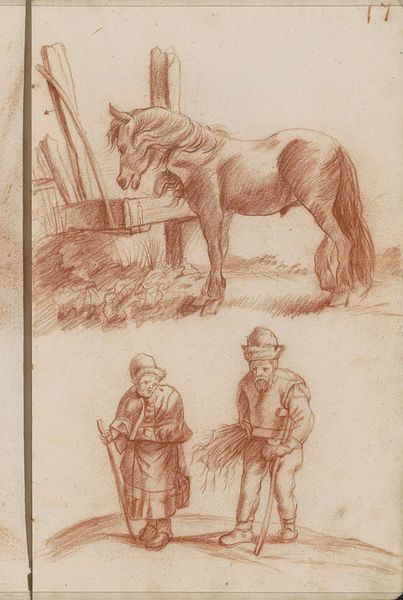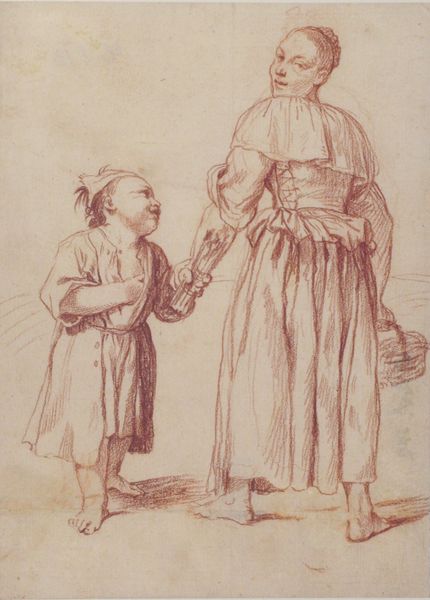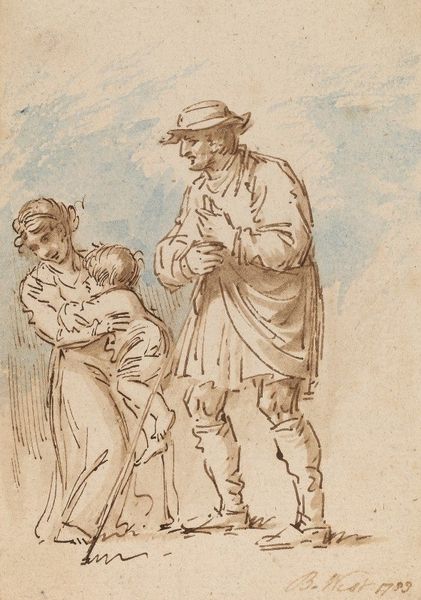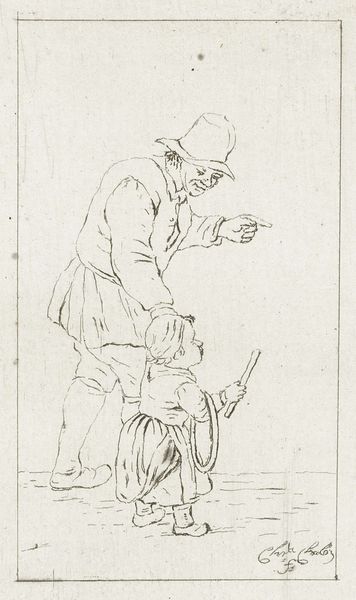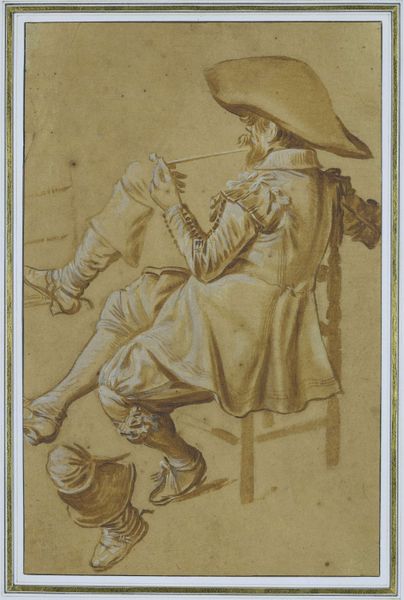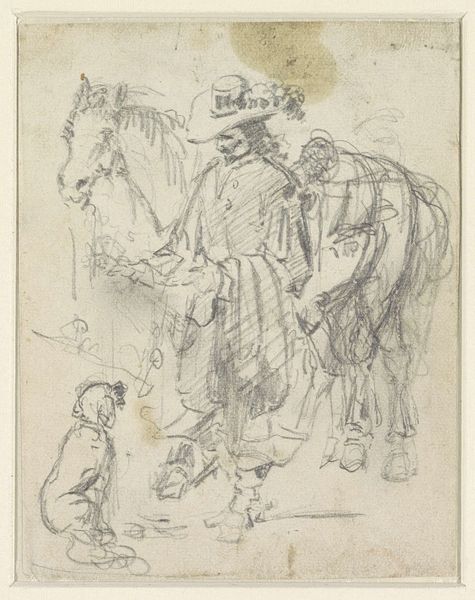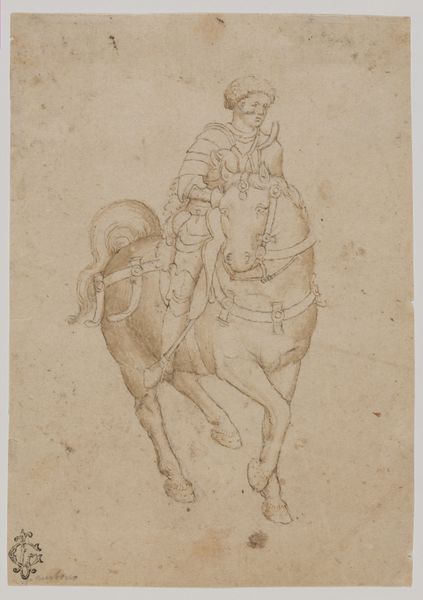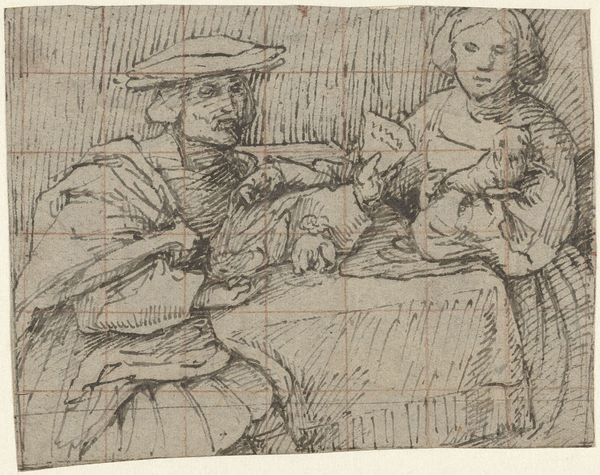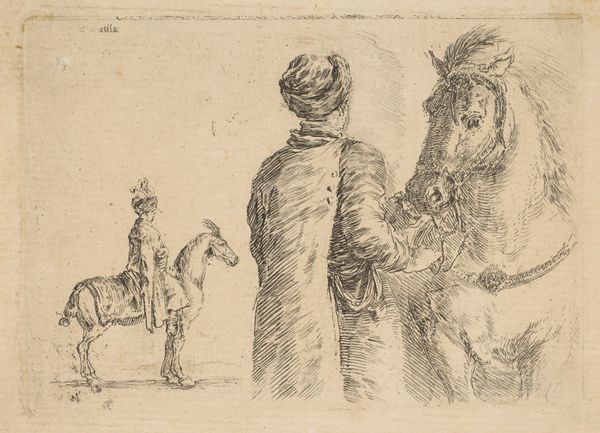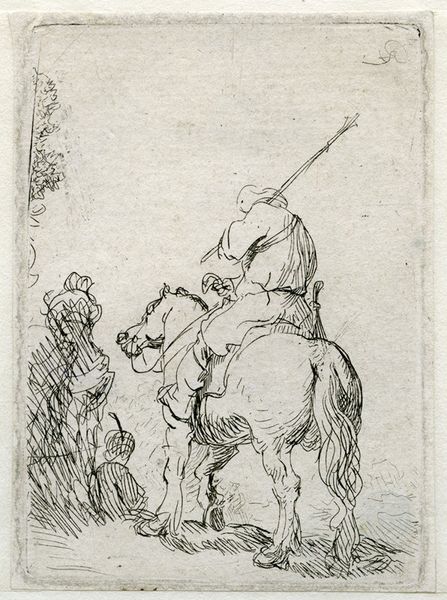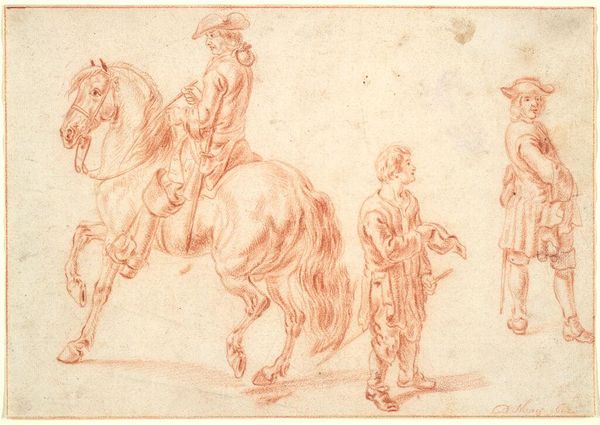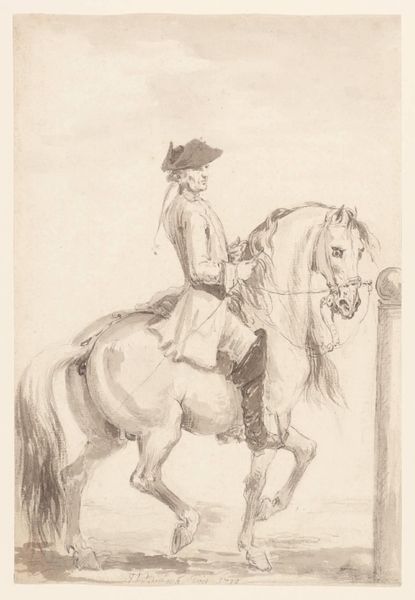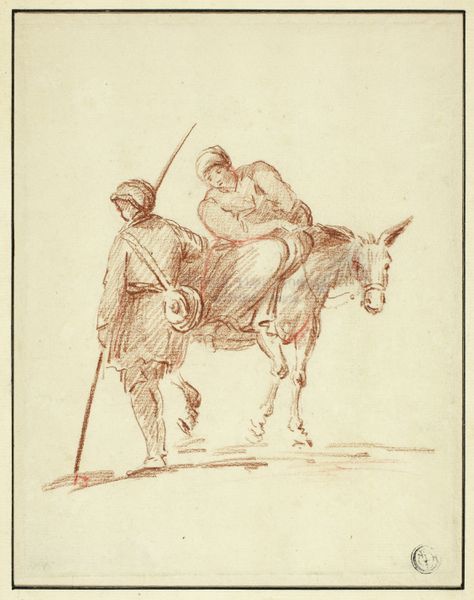
Marcolfa Persuades Cacasenno to Mount a Horse 1665 - 1747
0:00
0:00
drawing, print, pencil
#
drawing
#
baroque
# print
#
pencil sketch
#
figuration
#
child
#
pencil
#
horse
#
genre-painting
#
italian-renaissance
Dimensions: 7-15/16 x 5-3/4 in. (20.1 x 14.6 cm)
Copyright: Public Domain
Editor: We’re looking at “Marcolfa Persuades Cacasenno to Mount a Horse,” a pencil drawing by Giuseppe Maria Crespi, made sometime between 1665 and 1747. It’s smaller than I expected, given the detail. What stands out to you in this work? Curator: I'm struck by the stark simplicity of the materials: pencil and paper. This wasn't meant for the salon. It's a working drawing, evidence of artistic labor. The quick strokes betray the urgency of capturing a fleeting moment. Do you see how the figures are rendered, almost like a caricature? It speaks to a specific social context, a portrayal of everyday life, perhaps even poking fun at certain social classes. The materiality suggests a directness, an unfiltered glimpse into Crespi's process and observations. Editor: That's interesting, because the 'genre-painting' tag suggested everyday life, but the characters seemed so unique to me, rather than figures from a daily scene. Curator: Think about the production of images during the Italian Renaissance and Baroque periods. Consider the accessibility of drawing versus painting. Drawing, with its relatively inexpensive materials, offered a means for artists to explore themes and subjects outside the confines of formal commissions. Was Crespi offering this as a social commentary for consumption by others? What do you think of his decision to repeat lines to convey a sense of motion and volume, despite the drawing only existing in 2 dimensions? Editor: That repetition adds to the sketch-like quality of it all, even the 'pencil sketch' tag rings true because you really do get that initial impression of rough and readiness. Curator: Exactly! The raw materiality of the drawing medium itself is fundamental to how we interpret its social function. Editor: This has changed my perspective. I initially viewed it as just a simple genre scene, but considering the materials and the artistic process makes it much richer. Thank you! Curator: My pleasure. Analyzing the tangible components reveals how the work engages with culture and history.
Comments
No comments
Be the first to comment and join the conversation on the ultimate creative platform.
